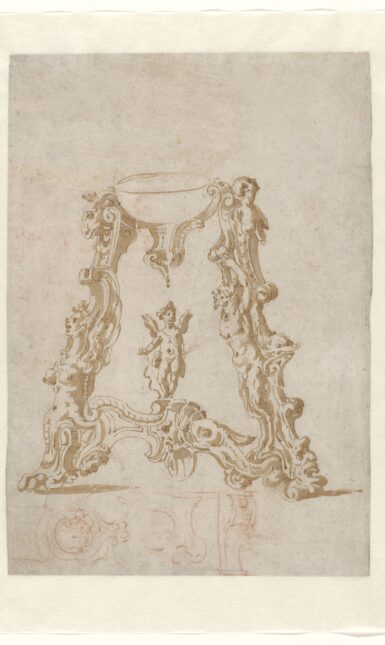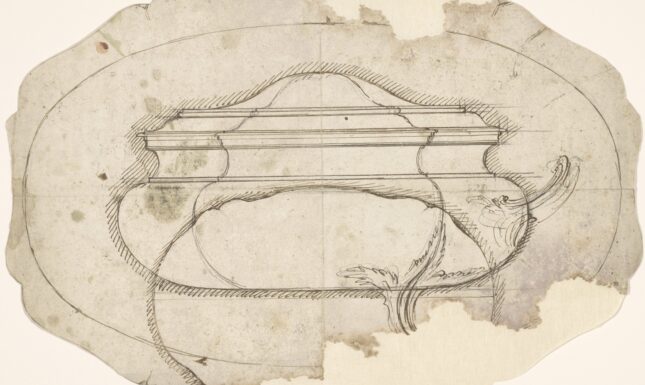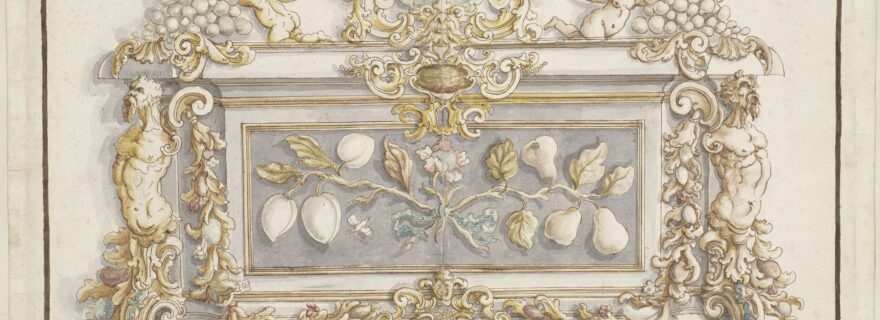Van de Waal Lecture 2021: Process, an exhibition of European design drawings.
On Monday September 6, 2021 the annual Van de Waal lecture was given by Reinier Baarsen, Professor by special appointment in the History of the Decorative Arts. The lecture marks the opening of the academic year for the Art History department of Leiden University.
On Monday September 6, 2021 the annual Van de Waal lecture was given by Reinier Baarsen, Professor by special appointment in the History of the Decorative Arts. The van de Waal lecture marks the opening of the academic year for the Art History department of the Leiden University. It is organized to commemorate Henri van de Waal (1910-1972) who was a professor at Leiden University from 1946 onwards. Van de Waal’s legacy is characterized by his innovative approach to art history. He was especially concerned with the historical function and meaning of artworks. Van de Waal was seen by his students as exceptionally inspiring, and founded a tradition of iconological research in Leiden. He is remembered every year by this lecture.
Van de Waallezing 2021This year’s lecture was given in a hybrid format: some guests were participating online, while others were allowed to be physically present. Baarsen, who is also the senior curator of furniture at the Rijksmuseum, talked about a new exhibition that will open on 5 November 2022 at the Design Museum in Den Bosch. The exhibition, Process: European Design Drawings from the Rijksmuseum, 1500-1800, is based around the collection of design drawings of the Rijksmuseum, many of which were acquired in recent years thanks to the support of the Decorative Art Fund.


For a long time, these drawings were an underexposed part of the decorative arts and did not receive much attention in the museological field. Design drawings have not been appreciated as much as the designed objects themselves. However, they can provide us with valuable information on the process of creating, selling and marketing of these artistic objects. Through this new exhibition Reinier Baarsen aims to display the phenomenon of the design drawings, whilst at the same time trying to incorporate these drawings more in their exhibitions. The exhibition will be one of the first to emphasize the role of these drawings in the creative process.
Reinier Baarsen talked about how the drawings provide insight into how objects are made and what considerations the designers had to go through. Baarsen mentioned a drawing which shows two designs for a salt vessel in the same picture (Fig. 1). The drawing shows that the designer created two different versions of what the vessel could look like.


It also reveals how the objects were presented to the patrons who ordered these objects, as they were often the target audience for said artworks. Some drawings were even made true to size as to better display what the actual object would look like (Fig. 2). These drawings could be shown to a potential buyer who could get a sense of what the object would look like, but also how it would fit into the desired place to display the object. The drawings were sometimes true to size and thus gives a real grasp of what the object would look like once it was created. So, according to Baarsen, the drawings do not only provide information on the creation of the object but also tell us something about the process of selling and marketing it to potential buyers.
The exhibition will focus on the time period from 1500 until 1800. During this period design drawings have been largely overlooked by museums. They were only regarded as important from the 1880’s onwards. Baarsen states that the museum aims to fill this lacuna with the coming exhibition. The Design Museum in Den Bosch is the perfect place to host such an exhibition as the museum is mainly concerned with design. This year’s van de Waal lecture therefore did not only open the academic year, it at the same time also sparked our interest in these new vessels of knowledge. For more information about this exhibition visit this page.
Emma Verweij is a master student at Leiden University and the University of Amsterdam. She studies ‘Art, Architecture and Interior before 1800’ in Leiden and ‘Curating Art and Cultures’ in Amsterdam with special emphasis on the arts of the Netherlands. She currently writes her thesis about sculptor Joseph Mendes da Costa and the selling of his early work abroad.


0 Comments